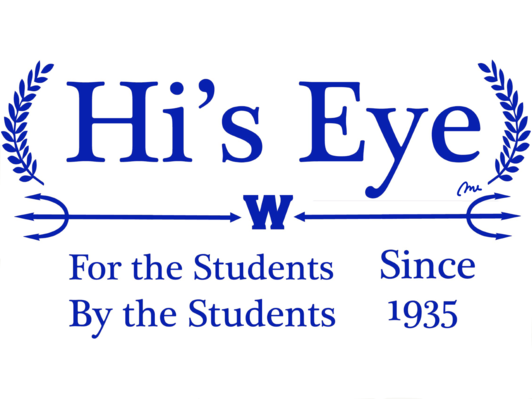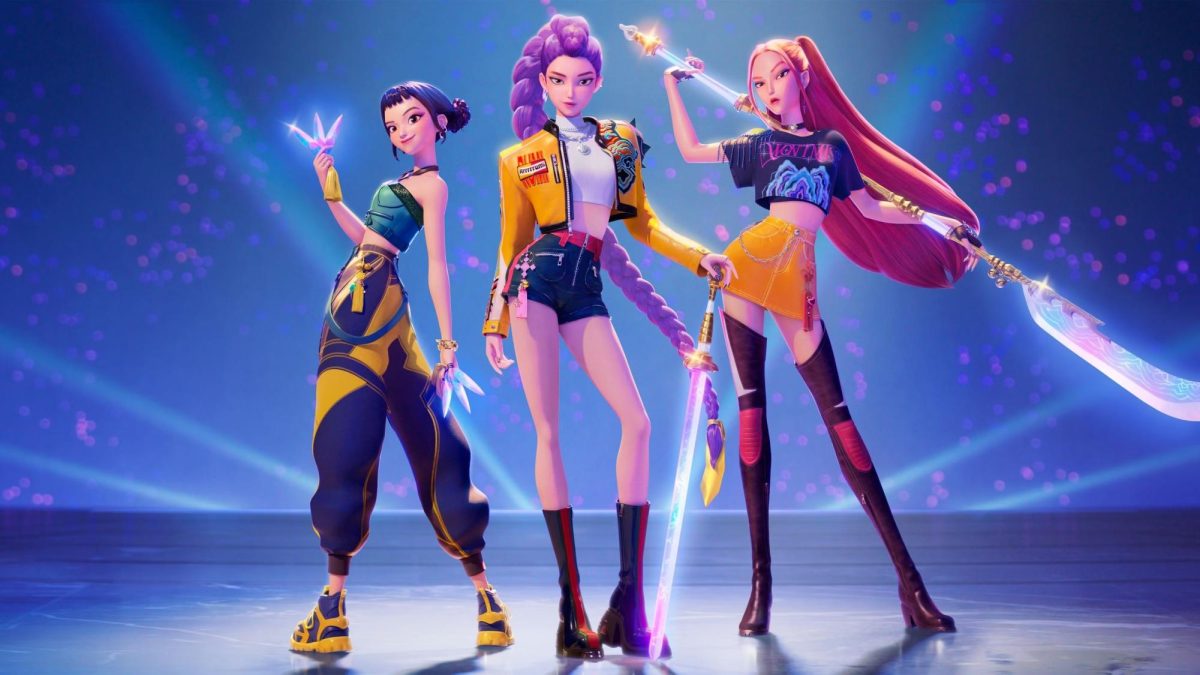The fictional world of K-Pop Demon Hunters has reached and inspired a variety of different audiences. From cartoon-loving children, to adults who connect with the deeper and emotional meaning, Netflix’s most-streamed film ever has something for everyone.
The movie follows a famous K-Pop girl group, HUNTR/X that lives a double life. The members include Rumi, the determined leader, Mira, who is strong-willed and speaks her mind and Zoey, who brings sweetness, humor and energy to the group. Although each member has a different personality, together they form a balance of strength and character.
HUNTR/X’s music not only entertains, but is also used as a magical force. Their songs help to strengthen the Honmoon, a magical barrier protecting the world from demons. Demons have been taking over their world for centuries, stealing innocent peoples’ souls. The demons are spirits that were unable to cross over to the real world, resulting in human emotions in the form of shame and regret. The demon king, Gwi-ma, feeds on these emotions, which indicates a connection between inner emotions and the existence of demons.
In the underworld, a rival demon boy band, Saja Boys, is created by Gwi-ma and led by the ambitious Jinu. Their purpose is to destroy HUNTR/X and weaken the barrier that protects the world from demons. The battles between HUNTR/X and the Saja Boys combine thrilling action scenes, energetic choreography and upbeat music.
The plot of the movie is complex enough to keep older viewers intrigued, but simple enough for children to understand. The infectious music and lovable characters hook watchers immediately. Out of the 11 songs in the film, 7 have already been featured on the Billboard Hot 100. Popular tracks like “Golden” and “Soda Pop” not only develop the plot, but have also become fan favorites.
Physical Education Teacher Kathryn DaSilva said, “My daughter was watching it one day, and I thought, ‘Okay, it’s a kid movie,’ and then I heard the song ‘Golden’ and I immediately turned to the TV and was just in a trance.”
Despite being produced by American studios, the film uses an innovative blend of K-Pop and Korean mythology. It incorporates symbolic figures such as the Saja Boys, who are based on Jeoseung Saja, a grim reaper-like figure in Korean mythology. The film combines Jeoseung Saja and the concept of Gwi-ma to create its main antagonists, the Saja Boys. This mythical idea becomes modernized when the Saja Boys perform original songs as a K-Pop band. Due to the modern twist on cultural ideas, the film has been praised by Korean audiences and idols for its authentic and accurate portrayal of Korean traditions and K-Pop culture.
As well, the response from audiences outside of Korea has been overwhelming and fans have flocked to social media to show their support. Other than becoming a family favorite for many, the film has sparked conversations about representation in the media.
For many young viewers of Korean heritage, being able to see their culture represented and celebrated in a positive light in the entertainment industry is groundbreaking.
Overall, K-Pop Demon Hunters is more than just an animated children’s movie — it is a cultural phenomenon. The blend of humor, music and storytelling resonates with all viewers and has created a unique space in the movie industry.

